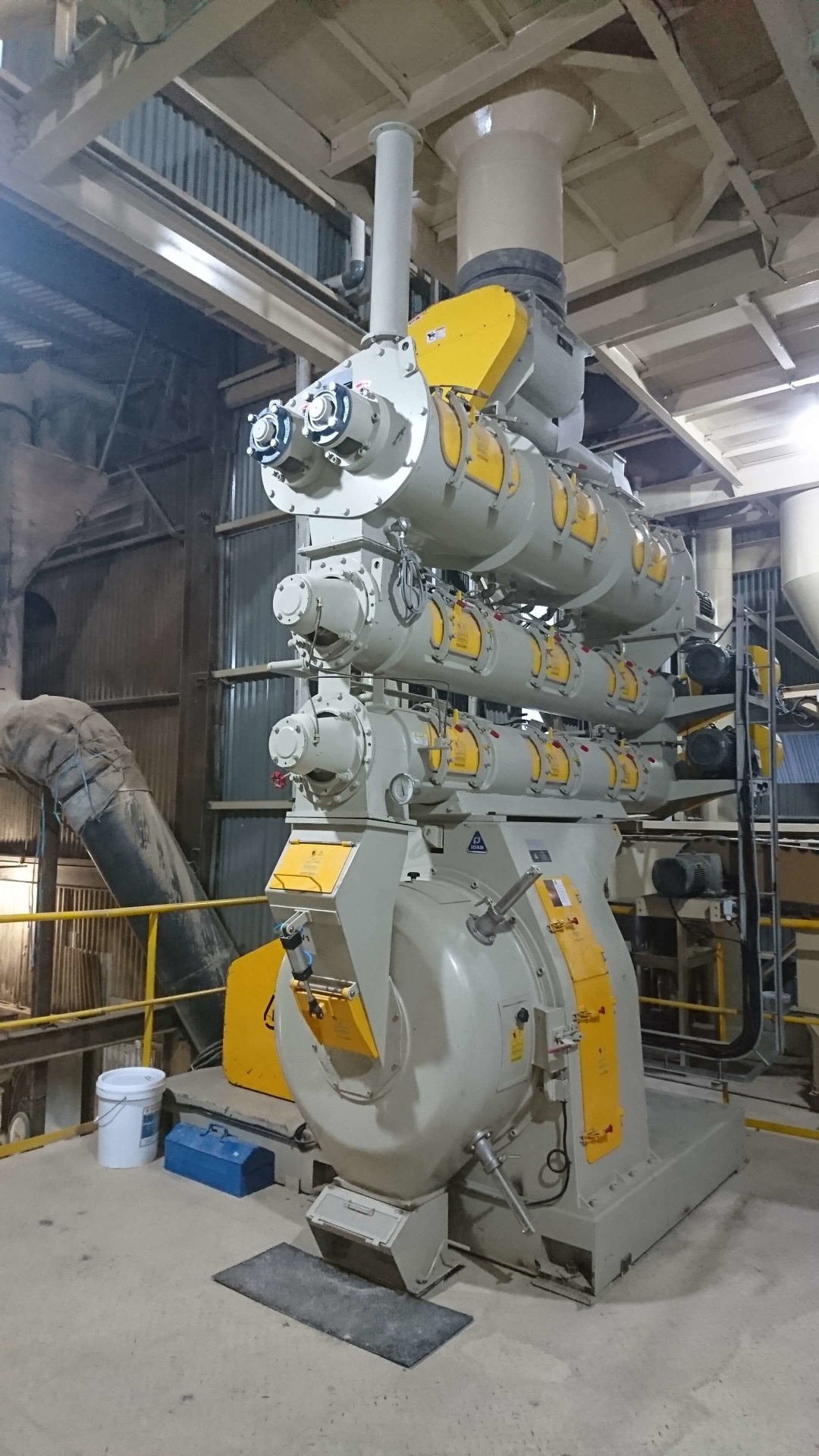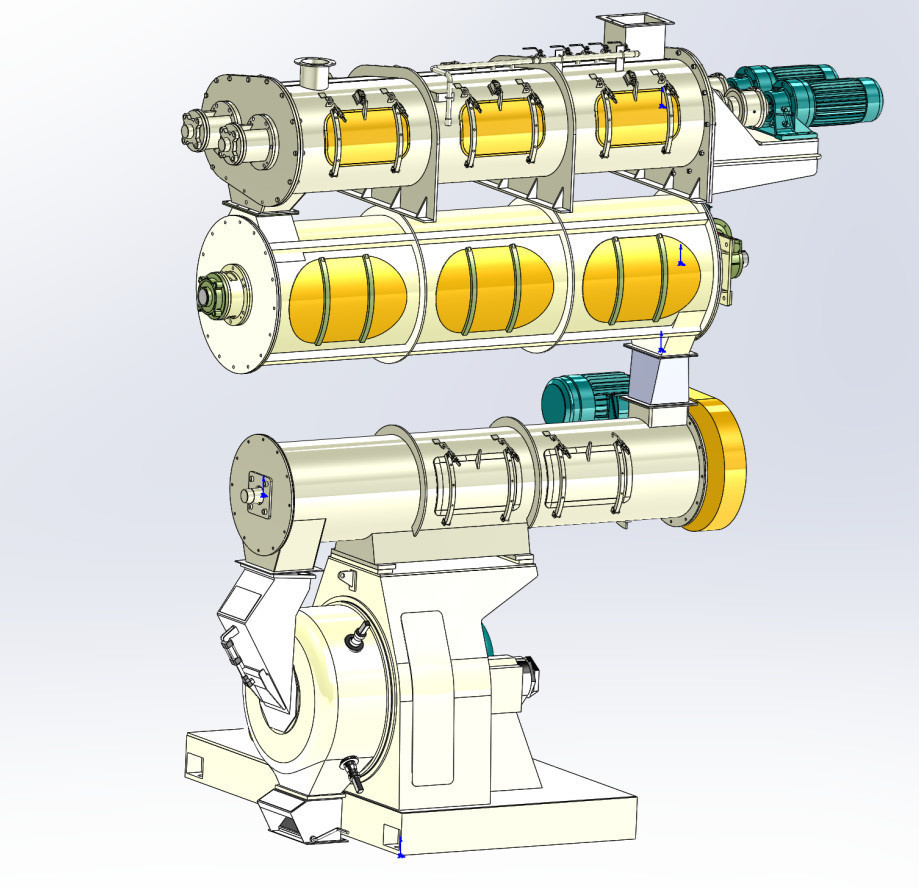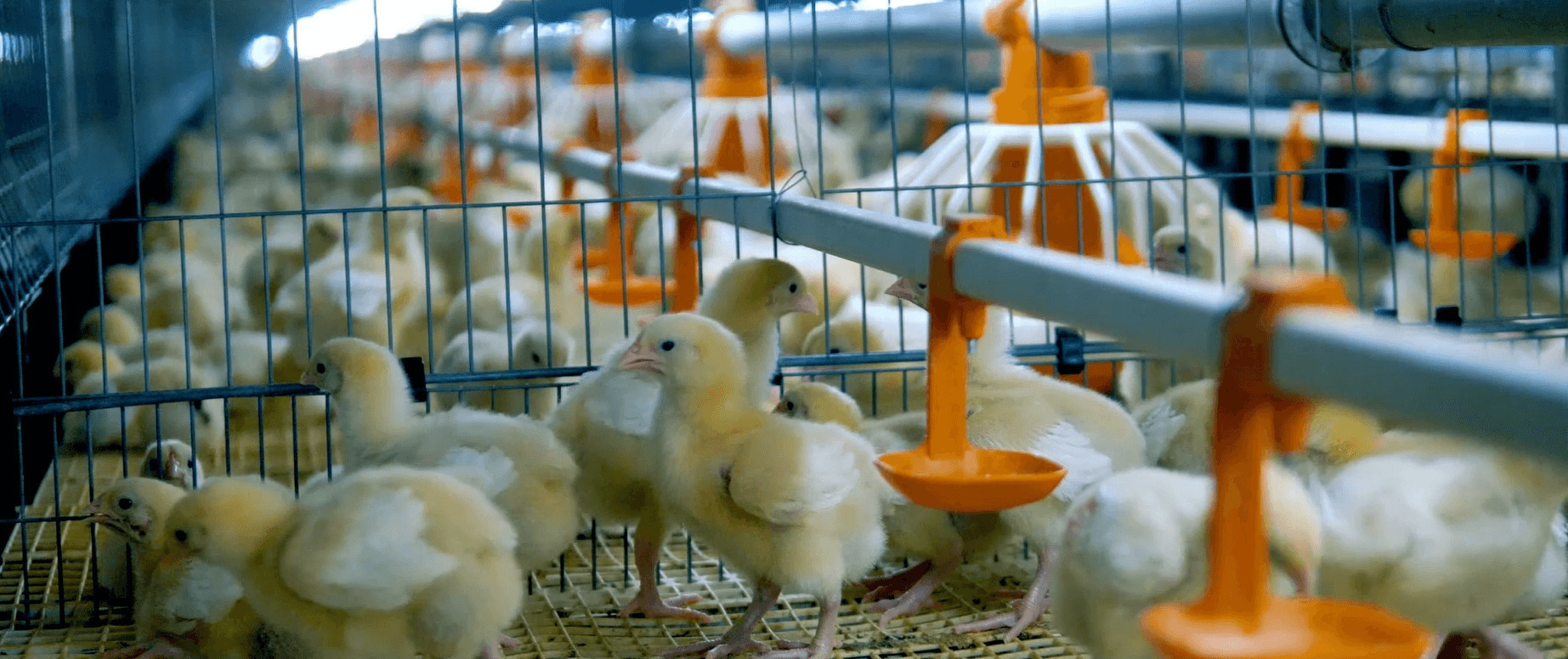The poultry feed comes in many forms. Pelleted or mash feeds are
popular in the market. Both products share a similar production
sequence until the mixing process. pelleted feed needs to undergo
pellet mill, cooler, and sifter after the mash is prepared.
Mash feed is a form of a complete feed that is finely
ground and mixed so that animals or birds cannot easily separate the
essential nutrients. The purpose of feeding mash diet is to provide a
well-balanced diet, give greater growth unification, less
death-incurred loss also feeding mash feed is more economical. When
producing mash feed, the material undergoes pre-grinding before mixing
and packing.
Pelleted feed is the continuation of mash
feed. The purpose of pelleting is for easy transport and feeding. The
nutrient value in every pellet is the same, so farmed animals will
consume all the good nutrients incorporated inside the pellets.

Raw Material
The raw material for cattle feed consists of coarse and powdery material
Pre-grinding
Optional step for coarse material.
Pre-grinding will lower the
energy needed for fine grinding.
Daily Tank Storage
Daily tank storage will contain the material needed for production
that day.
Some material from the silo will be placed in this daily tank
before entering the flow of feed production.
Dosing and Weighing
The material will be dosed based on the formula.
Post-grinding
Post-grinding is the final size reduction in the system.
It is common to use a pulverizer for producing ultra-fine powder.
Mixing
In this step, trace ingredients such as vitamins, minerals, and other liquid materials will be added.
Powder Feed (Mash Feed)
Pelleting
Pelleting starts with pre-conditioning, adding steam to further hydrate, and cook the material before entering the pelleting chamber to be formed into pellets.
Cooling
Cooling utilizes ambient air to cool down the hot pellet from the
pellet mill.
Thorough cooling is needed to prevent condensation inside the
packaging.
Pelleted Feed
Crumbling
In animal feed production, it is common to crumbler the feed.
This particle reduction is needed for easier consumption in
smaller animal or poultry
Packing
Packing gives protection to the pellets and also give easiness to handle and transport to customer's hand

Pelleting process description for poultry feeds
The counterflow cooler is used for cooling pellet and extrudate. Warm (hot) pellets get into the cooling chamber, the suction fan will transport out the air inside the chamber, and fresh ambient air will enter the chamber from the bottom, promoting pellet cooling action. When pellets are accumulated and touch the high-level limit sensor, a pneumatic discharge swivel valve will operate immediately to discharge the products. Counterflow air heat exchange ensures to achieve high cooling efficiency.
Pellets are conveyed through a sieve to remove impurity and deformed pellets. Fines and deformed pellets are recycled back to bins before the pellet mill. The sieved pellet of different sizes is stored in individual bins.
Finished pellets will be placed in bags or other transportation vessels to the reseller or customer site.
IDAH crumbler series is designed for high capacity and highly efficient particle reduction. Three types are available for every industry application. Every crumbler is equipped with the feeder on the top, to control the throughput of the product. The roll gap is easily adjustable to achieve the required granulation.

Features and Benefits of IDAH Process Design and Equipment
IDAH firmly believes in a strategy of design fit for purpose. We recognize the constraints our customers face with rising ingredient costs, energy costs, and overheads costs, yet in the face of these challenges, it is still expected that high-quality products be supplied into a very competitive market. Our design philosophy is to work continuously to refine and improve processes and equipment to maximize the success of our customers. The following describes some of the features and benefits resulting from this philosophy.
Poultry feed contains a high amount of grains and that means a high concentration of fiber. Good quality of pre-conditioning is the key to success in making poultry pellet feed. Enough direct and indirect steam heat source and moisture will soften the mash with high elasticity. cooked starch is the perfect binder to form pellets.
Too much fat added in the formulation will create a high amount of fines formation during pelleting. It is suggested to add 1% of fat in the mixer and this will lower the wear on the dies and improves the throughput of the pellet mill. Any additional fat is suggested to evenly spray on the pellets to improve the fat contents and quality of the pellet surface.
Specification of Pellet Mills (for Poultry feed)
| Model | PM-42R | PM-51R | PM-53R | PM-53F | PM-635D |
| Main Motor (HP) | 125 | 150 | 200 | 215 | 300 |
| Operation Capacity1 (t/h) | 3-4 | 4-5 | 6-8 | 10-12 | 13-15 |
Note:
1) Broiler Chicken Feed, pellet die hole size Ø 3.0 mm, moisture content < 12%, oil content <7%

